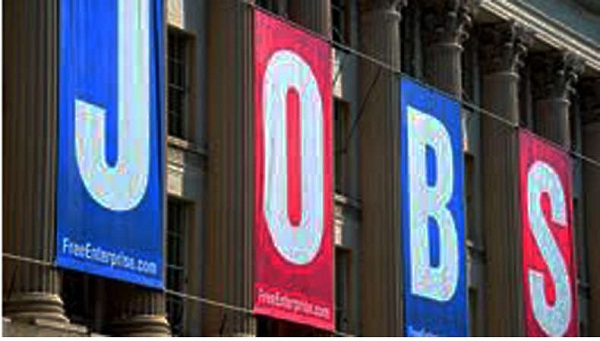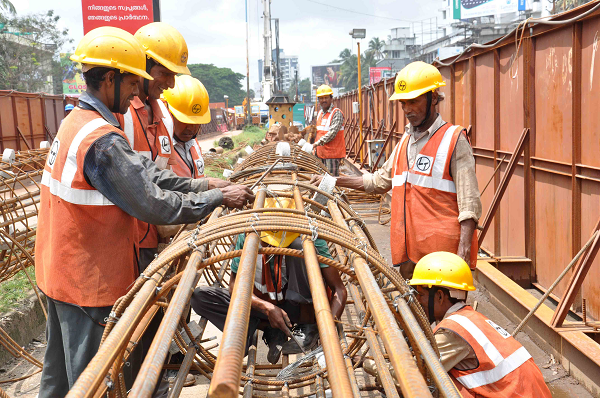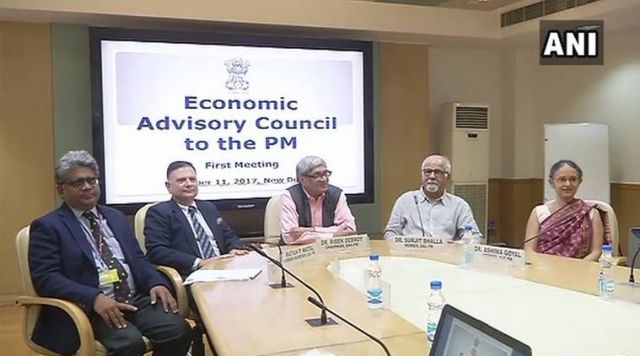
by admin | May 25, 2021 | Employment, Overseas
 Mumbai : There has been a sharp decline among Indians seeking jobs in two top destinations — the United Kingdom by 42 per cent and US by 38 per cent – attributed mainly to the political situations there, a new survey by top global jobs portal Indeed has revealed.
Mumbai : There has been a sharp decline among Indians seeking jobs in two top destinations — the United Kingdom by 42 per cent and US by 38 per cent – attributed mainly to the political situations there, a new survey by top global jobs portal Indeed has revealed.
Similarly, there has been a fall in the number of Indians wanting to work even in the United Arab Emirates (UAE) by 21 per cent, based on searches on Indeed, as per the survey results for 2016-2017 released here on Wednesday.
The report said that the prospects of Brexit could be a deterrent for Indian jobseekers in the UK, as other countries like Germany and Ireland have witnessed a 10 per cent and 20 per cent respectively increase during the same period.
Indeed India Managing Director Sashi Kumar said as one of the world’s largest hubs for IT talent, India has historically seen a steady outflow of IT professionals to countries like USA, UK and Australia.
“The new data shows an apparent reversal of that trend. The steadily growing Indian economy coupled with political uncertainties abroad has persuaded highly skilled Indian talents to stay back and find jobs here, which in turn has fostered a thriving ‘start-ups’ scene,” said Kumar
In fact, he said the research shows an overall five per cent decline in Indians looking to move abroad for job opportunities, while there has been a whopping 25 per cent increase in people from UK seeking jobs in India, and a 170 per cent increase in job-seekers from Asia-Pacific region to India.
He attributed the growing popularity of India as an ’employment destination’ to initiatives like ‘Make In India’ and ease of doing business, and the latest figures indicate a trend of people working in UK and Asia-Pacific regions willing to return to India.
Despite the declining figures, the USA still remains the top choice with 49 per cent of people searching for job opportunities there, followed by UAE (16 per cent), Canada (nine), UK (five), Singapore (four), Australia (three), Qatar (two), Bahrain and South Africa (one percent each).
In 1960, there were around 12,000 Indian immigrants to the USA, which increased to 2.4 million by 2015, making Indians the second largest immigrant group in the US after Mexicans.
There are around 1.50 million Indians living in the UK, making them the largest single ethnic minority group, accounting for nearly one-quarter of the total ethnic minority population in that country.
—IANS

by admin | May 25, 2021 | Employment, Opinions
 By Amit Kapoor,
By Amit Kapoor,
The lack of jobs is beginning to haunt the Modi government. The Reserve Bank of India’s recent Consumer Confidence Survey shows that public perception is also beginning to take account of the fact that there are no jobs available in the economy. According to the survey, 43.7 percent of responders felt that the employment situation had worsened as compared to 31.9 percent a year ago.
The official unemployment numbers, which hover at around five per cent, will never reflect the true picture since in a developing economy, where poverty is high and unemployment benefits are virtually non-existent, no one can afford to remain out of the workforce for long. They usually find employment doing odd jobs or in the agricultural sector.
However, job creation numbers do give a clearer picture. According to the Labour Bureau, the Indian economy was generating around 900,000 jobs in 2010 and 2011. Since then, the jobs created in the economy have consistently fallen, reaching around 135,000 in 2015 as opposed to the need for an annual generation of over 11,00,000 jobs. The situation has not improved since.
However, this is not a recent phenomenon. The Indian economy has never been good at creating jobs. As per popular estimates, including those of the RBI, India’s employment elasticity, which is a measure of the percentage in employment for a one percent change in economic growth, has been around 0.2 in the post-reform period. This implies that as the real GDP rises by 10 percent, employment will merely rise by two percent. To put things in perspective, International Labour Organisation (ILO ) estimates Brazil’s employment elasticity to be an impressive 0.9.
This long-term trend shows that there is a structural reason behind this problem. When an economy transitions from agricultural-led to a modern one, it undergoes three key transformations: Movement of labour out of agriculture into industry and then services, shift of workers from informal into the formal sector and finally a rapid pace of urbanisation as more industries are set up in the rural areas around cities.
India has missed the bus on all three of these fronts. Industrial development never took place in India and the economy became service-led right away. Employment in industry and services remains predominantly informal. Consequently, the pace of urbanisation has slowed in India.
Moreover, whatever industrial development has taken place in India has been either capital-intensive or skilled labour-intensive. India’s labour-capital ratio in a vast majority of industries has been lower than other countries at similar levels of development. The very opposite is needed for job creation in a developing economy. But why has the pace of development been so skewed for India? What is so different about India that made it deviate from the historical trend of structural transformation for economies around the world?
India’s notoriously rigid labour laws are the leading cause behind these anomalies. Labour falls under the concurrent list of the constitution, which implies that both the Centre and the states can form laws on it and neither has been miserly about this. When combined, each state ends up with over 200 different labour laws. These disincentivise firms from growing beyond a point. For instance, the Trade Unions Act of 1926 requires firms with seven or more workers to form trade unions. The Factories Act of 1948 mandates manufacturing units with 10 or more workers to have several working hour limits and work place conditionalities that become stricter with more workers.
The most burdensome of all is the Industrial Disputes Act (IDA) of 1947, which covers all industrial disputes and makes it almost impossible for firms with 100 or more workers to fire anyone. Establishments require permission from the labour department to lay anyone off and such permissions are rarely given even if the firm is unprofitable. Therefore, firms with six or less employees have the most labour flexibility.
As expansion of firms comes with high legislative costs in India, it is rational for them to remain small. This is why 84 per cent of manufacturing employment is restricted to micro and small enterprises in stark contrast with other developing countries (46 per cent for South Korea and Thailand, 27 per cent for Malaysia and 25 per cent for China).
India’s labour laws have inhibited the growth of manufacturing firms, which lose out on the gains they could have made from economies of scale and innovation. Due to these reasons India has not been able to undergo industrial development and is finding it difficult to gain from the rise in labour costs in China. India could have been the next manufacturing hub after China but since there is a sheer lack of capability; countries like Bangladesh and Vietnam have been thriving in labour-intensive sectors like textiles.
Labour reforms are, therefore, the antidote to India’s perpetual job crisis — but this is politically sensitive topic. The Modi government is in a unique position of being capable enough of pushing through such bold reforms since it has the numbers needed for this. However, considering how most of its attempts at reform have backfired, this will be the farthest thing on the government’s mind. A piecemeal attempt at labour reform with the Small Factories Bill, which aims to exempt factories with 40 workers from 14 labour laws, has been in limbo for the last two years.
However, on a positive note, some state governments are beginning to allow larger firms to retrench workers without seeking permission with their own amendments to IDA. Hopefully, it will not be too late before India manages to extricate itself from this mess of its own creation.
(Amit Kapoor is chair, Institute for Competitiveness, India. The views expressed are personal. He can be contacted at amit.kapoor@competitiveness.in. Chirag Yadav, senior researcher, Institute for Competitiveness, India has contributed to the article.)
—IANS

by admin | May 25, 2021 | Business, Economy, Employment, News
 New Delhi : With growth in international arrivals in India, there would be a creation of approximately one million additional jobs, according to a World Economic Forum (WEF) report.
New Delhi : With growth in international arrivals in India, there would be a creation of approximately one million additional jobs, according to a World Economic Forum (WEF) report.
As India prepares to launch the Incredible India 2, the report put forward few recommendations, including the importance of public-private cooperation in its execution, and suggesting that advantage be taken of the unexplored 6,00,000 villages with their own culture and heritage, ecotourism and cruise tourism to create unique experiences for travellers.
Another recommendation was to integrate the Incredible India campaign into a holistic campaign that includes not only print but also other channels, such as digital, social, placement, review sites and global media, focussing on the positives of visitor-created content while addressing the challenges these visitors say.
Taking advantage of the labour force available in India to provide a quality product to tourists and enhancing the perception and reality of India as a safe destination were other recommendations.
Several top names from the Indian travel and aviation industry have contributed towards the findings in the report, the WEF said in a statement on Wednesday.
“The industry is people focused and the quality of its people defines the value of the product. Hence the need to train and educate staff is acute here”, said Aditi Balbir, one of the contributors to the report.
He observed that the industry had the power to create jobs across the economy at various skill levels, and for the marginalized sectors of the society.
The WEF white paper also recommends a proposal to create a Tourism Board.
“Currently, India’s travel and tourism industry is fragmented and lacks a unified public-private body to represent the industry, in turn hindering its ability to achieve its potential.
“This board could support enhancing industry coordination, public-private sector initiatives and enacting change through policy recommendations,” it said.
It noted that India welcomed nine million international travellers in 2016 and its domestic demand nearly touched the 100 million mark, adding India is effectively one of the fastest growing aviation markets in the world and according to the Travel and Tourism Competitiveness Report 2017, one of the most improved nations, reaching 40th position compared to 65th in 2013.
—IANS

by admin | May 25, 2021 | Economy, Employment, News, Politics
 New Delhi : With the economy slowing down and joblessness becoming a major issue, the newly-constituted Economic Advisory Council to Prime Minister Narendra Modi on Wednesday identified 10 major priority areas including accelerating economic growth and employment over the next six months.
New Delhi : With the economy slowing down and joblessness becoming a major issue, the newly-constituted Economic Advisory Council to Prime Minister Narendra Modi on Wednesday identified 10 major priority areas including accelerating economic growth and employment over the next six months.
The 10 themes were identified during the first meeting of the council chaired by NITI Aayog Member Bibek Debroy. The council was reconstituted a fortnight ago in what was seen as the government acknowledging for the first time the problem of economic slowdown.
Apart from giving recommendations to the Prime Minister on these issues, the EAC-PM would also focus on the next budget preparation over the coming months, Debroy told reporters here after the meeting.
During the meeting, Chief Economic Advisor Arvind Subramanian focused attention on accelerating economic growth — including investments and exports — using a combination of different policy levers.
The council took stock of the current economic, fiscal and monetary policy environment and resolved to focus on key identified issues.
“We have identified 10 themes that we would initially work on till we have our next meeting one month from now,” Debroy said.
“The 10 themes identified are economic growth, employment and job creation, informal sector and integration, fiscal framework, monetary policy, public expenditure, institutions of economic governance, agriculture and animal husbandry, patterns of consumption and production, and the social sector,” he added.
Debroy said the entire thrust of the council would be on specific implementable recommendations, which would distinguish it from other bodies.
“Our view will be on specific thing you can change,” he said.
The council members would come up with a report in the coming months through consultative processes with ministries, states, private sector and other stakeholders.
They would also come out with specific issue papers to address key concerns, a statement said.
—IANS

by admin | May 25, 2021 | Employment, Opinions
 By Amit Kapoor,
By Amit Kapoor,
Since the latest growth numbers have come in showing a consistent deceleration in Indias real gross domestic product (GDP) over six consecutive quarters, a cacophony of concerned voices have been heard. The din of criticism both from within and outside the government has grown so loud that Prime Minister Narendra Modi himself has had to intervene in order to defend his economic record. This warrants the question whether the situation is as grave as it is being made out to be. The simple answer is that, in some respects, there is not much that is out of the ordinary about the economic scenario, while in others the trends are cause for concern.
First and foremost are the growth figures. It is not rare for GDP growth to fall for such a long period. In fact, as recently as 2011-12, the GDP had decelerated for exactly six quarters between Q1 of 2011 and Q2 of 2012. By the end of that phase, the growth rate had fallen to a lowly 4.1 per cent. However, in the very next quarter it had bounced back to 6.1 per cent. This is not to make a simplistic argument for complacency, but to point out that growth in developing countries tends to be highly volatile and the Indian economy has shown strong resilience to such downturns. Therefore, a sense of panic is unwarranted and premature.
The second general concern with the economy is slightly more problematic. However, as we will show, it, too, is not out of the ordinary. The level of investment in the economy has become a major cause for concern. As we have pointed out in this column earlier, the level of private and household investment has hit rock bottom and only public investment has been pushing the economy forward. However, World Bank data shows that India’s gross fixed capital formation (GFCF), the leading indicator for investment, has been consistently falling over the last decade. In 2007, India’s GFCF had reached an all-time high of 36 per cent of GDP, close to China’s 39 per cent. Since then, India’s GFCF has fallen to 27 per cent while it has risen to 43 per cent for China. This points to the fact that investment sentiment never recovered in India after the 2008 crisis.
Again, a long-term negative trend is no reason for complacency. According to the RBI’s Annual Report, the non-food credit take-off across the country has been at its lowest in almost 25 years. Low credit take-off indicates that industrialists are unsure of future prospects and have postponed investments owing to weak demand. The twin balance sheet problem that is the leading cause behind the muted investment sentiment needs to be urgently resolved. Fortunately, the government has been proactive on this front and is taken some positive steps to resolve bad debts of big accounts.
Apart from the fact that growth and investment have historically shown poor trends and that we are not in a unique situation, the fundamentals of the economy are significantly stronger than usual. The government has done a good job of sticking to its fiscal deficit targets while the RBI has done the same with inflation. Moreover, the country’s foreign exchange reserves have crossed $400 billion — huge by any standard. To put things in perspective, these reserves equalled 78 percent of India’s total external debt (both short and long term) at the end of March. It may be debatable whether the country needs such a huge trove of reserves, but they are considerable enough to ensure short-run and medium-term stability of the economy.
The most concerning factor of the economy, which also has had a similar long-term history, is unemployment. Lack of jobs is an aspect of the Indian economy that simply can no longer be ignored. Since India missed its own industrial boom and directly ended up becoming a service-led economy, jobless growth has been a problem for long. This is because services are not as labour-intensive as manufacturing. However, the situation has worsened more recently. Between March 2014 and 2016 India experienced an absolute decline in employment, probably for the first time since independence, as pointed out by the Economic and Political Weekly. A fall in the absolute number of jobs for a developing country like India, where 10 million people are expected to join the workforce annually, is disastrous, to put it mildly.
All in all, the falling growth rate will reverse its trend soon as history proves. This will happen over the next few quarters as the after-effects of the twin shocks of demonetisation and GST subside. Investment will hopefully see a revival once the banks find their balance sheets improving. But the problem of job growth will pose the real challenge to the Modi government.
The recent frenzy around the deceleration of GDP growth does not do justice to this structural problem with the economy. Growth rates are understandably volatile and the fall in this period has been accentuated by demonetisation and the implementation of GST. The economy is resilient enough to extricate itself out of these shocks and, in fact, the latter will only be beneficial in the long run. The real problem lies with job creation and it was not a problem created yesterday. The problem of jobs is deep-rooted within the economy and will require equally deep-rooted reforms. The specifics of those reforms are a discussion for another day — but we need to begin by shifting our focus to the appropriate concerns.
(Amit Kapoor is chair, Institute for Competitiveness, India. The views expressed are personal. He can be contacted at amit.kapoor@competitiveness.in and tweets @kautiliya. Chirag Yadav, researcher, Institute for Competitiveness, India has contributed to the article.)
—IANS

 Mumbai : There has been a sharp decline among Indians seeking jobs in two top destinations — the United Kingdom by 42 per cent and US by 38 per cent – attributed mainly to the political situations there, a new survey by top global jobs portal Indeed has revealed.
Mumbai : There has been a sharp decline among Indians seeking jobs in two top destinations — the United Kingdom by 42 per cent and US by 38 per cent – attributed mainly to the political situations there, a new survey by top global jobs portal Indeed has revealed.



